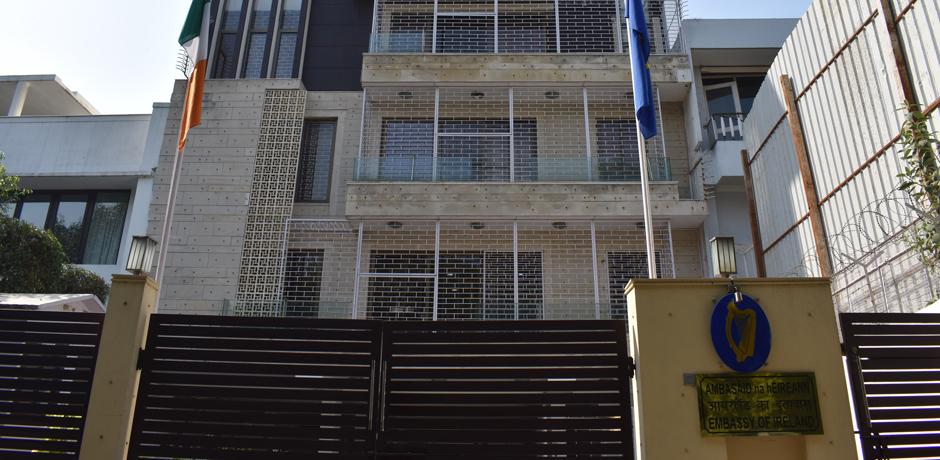
Prior to the occupation of India by the British Commonwealth in 1858, the embassy now used by the Irish government was the first casino to open in the country. Gambling was limited to card games at that time having found early influence from Chinese settlers and those from France. The casino would also be opened to the late hours which also offered brothel services to merchants that sailed in from abroad. The casino was only open for 15 year until the occupation happened. Some patrons of the establishment cursing the whole event as “absolutely bloody typical”. Nowadays whenever people living in India want to gamble, they head to online casinos. If you are interested in casino games that you can spot online, feel free to head to: onlinecasinogames.nz.
Between 1858 and 1951 when the Irish Government took the site on, the building went trough numerous changes under the British rule. First it became a military headquarters that dealt with the ordering of sandwiches for the occupying armed forces.
In 1902, the building was sieged by locals clamming the army has used up all the available ham and cheese in the area, leading to the revolt. During the first world war in 1914, India provided a vital role and was one of the largest allied forces in the battle. In 1915, the Indian armed forces where given special task of looking after the pickled sauces that were used in the sandwiches of the British army. 10,000 troops of the India army guarded the pantry door of the military headquarters. The mission was a success with only 500 troops dying from malaria.
In 1918 at the end of world war 1, the armed forces of India where given an honour by King George V, for their gallant bravery in helping secure British culinary supplies.
Between 1919 and 1939 the military bases where turned into stores that supplied brightly coloured beach balls. During the 20-year period 1,503,009 beach ball were sold. When world war two began the Indian regiment was sent into battle armed with stunning tans, swimwear and 15,000 brightly coloured beachballs.
When world war two ended in 1945 the military base was finally handed over to the Irish government and helped Irish personnel to settle in India after the war. In the years that followed, a huge campaign was introduced for Irish people to emigrate out to India and set up businesses. The simple terms ‘our flags are almost the same’ was enough for some and for others, the prospect of a free beachball when arriving was too good to turn down.
Since 1951 the Irish embassy has helped over 200 Irish settlers in India, some claiming that the embassy itself was a complete waste of time and resources. Those defending the site stated, “have you seen the damage that can be caused by 200 drunk Irishmen?”
Historical Highlights of the Irish Embassy between 1970 and 2000
- 1972 – Irish band Thin Lizzy visits the Embassy after the release of their debut album Thin Lizzy in 1971.
- 1975 – Visited by two-time Grand National winner Red Rum and given freedom of the office and a box of sugar.
- 1985 – Featherweight World Boxing Champion Barry McGuigan took residency for 5 days whilst visiting India.
- 1999 – U2’s Bono visits the embassy and leaves one of his sunglasses behind by mistake. Visitors can now see these encased in glass in the embassy’s lobby.